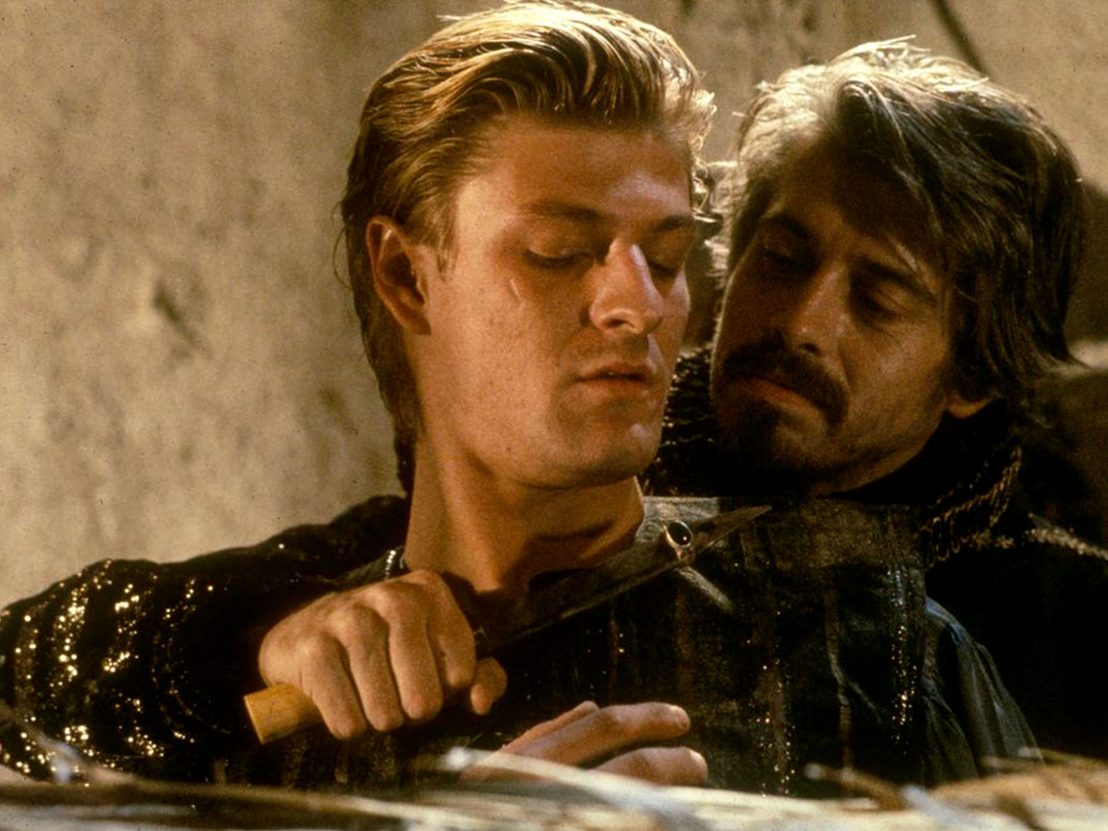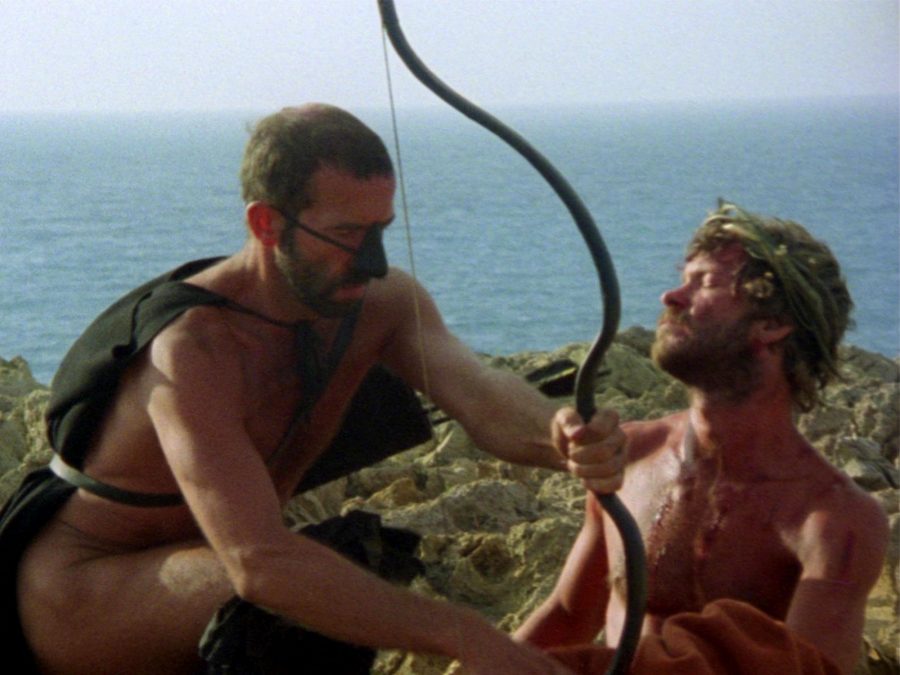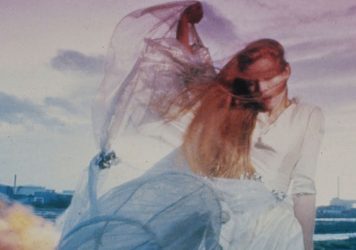
On the surface, Derek Jarman’s 1986 film Caravaggio is a highly traditional biopic, a sort of greatest-hits version of the life and work of the (in)famous artist, complete with the framing device of an older Caravaggio (Nigel Terry) on his deathbed used to anchor the story as it jumps backwards and forwards in time. But what is unconventional about the film – and Jarman’s approach to ideas of history and biography – is the way it reframes Caravaggio’s paintings, imbuing them with a certain queerness; a way of reclaiming the past.
One of the most visually striking aspects of the film is the way it recreates Caravaggio’s paintings, from the young artist himself (Dexter Fletcher) appearing in a self-portrait as Bacchus, to the many portraits of Lena (Tilda Swinton), including ‘The Patient Magdalene’ and ‘The Death of the Virgin.’ It isn’t just Jarman’s artistry here that’s impressive, but how he changes our perception of Caravaggio’s art.
After Caravaggio meets and immediately becomes infatuated with Rolento (Sean Bean), he is shown painting the young man. This turns the painting into something queer, motivated by desire – and not just the painting, but the act of making art itself. Jarman challenges the idea of where art comes from, and what these paintings mean for a contemporary audience. He forces us to reconsider what we know or don’t know about the director’s own life and work, as well as the historical narrative of respectability – in this case, heterosexuality – that is so often associated with art history. Jarman refuses to allow notions of queerness to be relegated to the subtext, instead foregrounding them in how and why his Caravaggio makes art.
The relationship between life and art is among the film’s main themes, with the title character himself asking “how can you compare flesh and blood with ground pigment?” Jarman examines what it means for these paintings to be true to life, especially as Caravaggio’s queerness is explored in different ways throughout the film (he’s considered to be the perfect artist for a commission on “profane love”). The repercussions of Caravaggio’s art and queerness are discussed in a way that feels uniquely modern; through a bitchy art critic who describes his work as a “sad reflection of our time.” This further exemplifies one of Jarman’s favourite methods for exploring history through contemporary eyes: anachronism. The critic lies in a bath, hammering away at his review on a manual typewriter.

This spirit of anachronism – bringing together past and present – is also evident in the opening sequence of 1976’s Sebastiane, Jarman’s exploration of the biblical saint. The scene in question is a strange orgy, with the participants in makeup that brings to mind Leigh Bowery and the Club Kids as they brandish comically huge mock-penises, culminating in a quote-unquote money shot. In Sebastiane, Jarman approaches the sexuality of the past much in the same way as he does in Caravaggio: by refusing to treat it as subtext. It’s fascinating just how pornographic the opening of Sebastiane is; a radical act of refusal.
The way Jarman captures the male bodies of Sebastiane and his fellow soldiers, showing them as desirable, as queer, still feels rare in contemporary queer cinema. The men move between a kind of ‘no-homo’ bragging to moments of astonishing intimacy, as when they swim together and are seemingly revitalised by the water, or when Sebastiane takes off his general’s armour. Everything from the language to the presentation of masculinity (something that at once offers these men companionship, but limits how they can express themselves around each other) makes the film feel distinctly modern.
There’s a clear power in the kind of representation that these films offer, and it’s more than just the ways in which they make queer desire explicit. In Caravaggio, with its reclamation of not only the artist but his art, Jarman reveals that queerness has been present in our history for a long time. The history of representation is much shorter than the history of queerness, of course, but crucially Jarman queers the act of historical narrative and storytelling, making myths for those who went without them for so long.
Published 30 Jan 2021

By Max Ramsay
The pioneering British filmmaker’s final work remains a profoundly personal and poetic work.

By Sam Moore
In a time of political uncertainty, his bold representations of queerness remain as vital and relevant as ever.

By Adam Scovell
Visiting the site near Southwark Bridge in London where the late artist’s filmmaking career began.